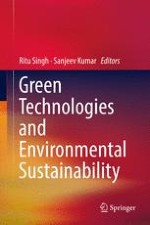2017 | OriginalPaper | Buchkapitel
16. Green Analytical Techniques: Novel and Aboriginal Perspectives on Sustainable Development
verfasst von : Elijah M. M. Wanda, Edgar C. Mapunda, Deogratius T. Maiga, V. Sivasankar, Bhekie B. Mamba, Titus A. M. Msagati, Kiyoshi Omine
Erschienen in: Green Technologies and Environmental Sustainability
Aktivieren Sie unsere intelligente Suche, um passende Fachinhalte oder Patente zu finden.
Wählen Sie Textabschnitte aus um mit Künstlicher Intelligenz passenden Patente zu finden. powered by
Markieren Sie Textabschnitte, um KI-gestützt weitere passende Inhalte zu finden. powered by
